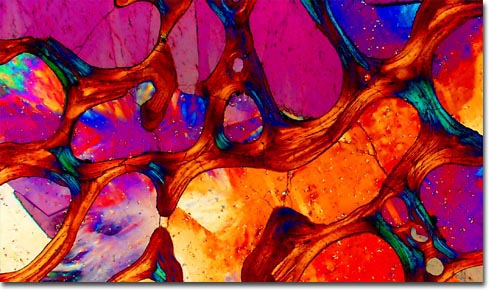|
The osteon, which is comprised of many layers of material, is the principal structural unit of mature compact bone. Cylindrical in shape, osteons are readily seen in cross sections of bone, appearing as clusters of concentric circles, each of which surrounds a central canal. Named Haversian canals in honor of Clopton Havers, the seventeenth-century English anatomist and physician who discovered them, these important formations house diminutive blood vessels and nerves in living organisms, though they appear filled with crystals in the photomicrograph of fossilized dinosaur bone shown above. The primary purpose of the vessels typically found in Haversian canals is to provide a blood supply to bone cells, which are also known as osteocytes.
|
